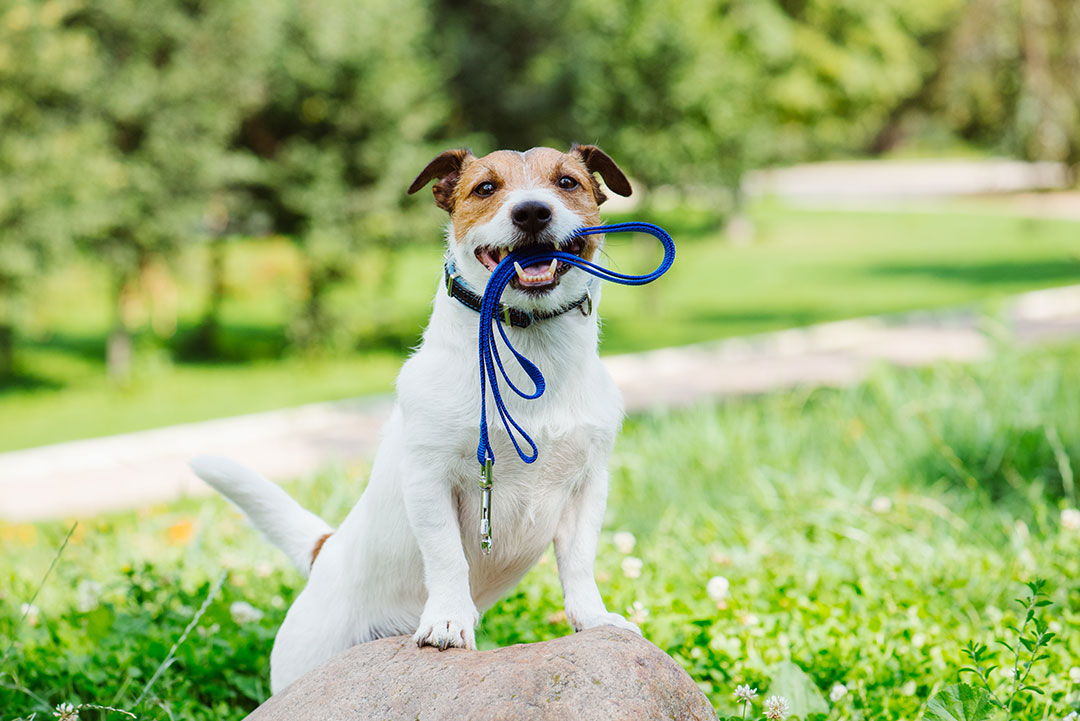Why is TPLO an effective Surgical Correction for my Dog’s Cranial Cruciate Rupture?

TPLO surgery (tibial plateau leveling osteotomy) is the most commonly recommended treatment for the rupture of a dog’s cranial cruciate ligament. This injury is like an ACL tear for dogs, and TPLO surgery is designed to stabilize the stifle (knee) joint following the ligament’s rupture.
How Does a Cruciate Tear in a Dog Happen?
Dogs develop cranial cruciate ligament disease (the musculoskeletal problem that leads to a cruciate tear in a dog) for a myriad of reasons. Most commonly, the issue arises due to genetics. Certain predisposed breeds have a tibial plateau slope that’s inclined too far backward, which places constant stress on the ligament. 50% of dogs that develop CCLD due to a genetic component will eventually suffer a tear in both stifle joints.
“It’s by far the most common orthopedic condition we see in our practice,” Dr. Mark Beerenstrauch, DVM said of cranial cruciate ligament disease. “In breeds, which are genetically predisposed, I have seen it develop as early as six months of age.”
Additional factors, such as weight, metabolic diseases (hypothyroidism and Cushing’s disease), and a dog’s activity level can also play a role in the development of CCLD.
All about the TPLO Procedure

In the 1980s, Dr. Barclay Slocum noticed that some dogs had an abnormal slope of their knee (tibia) which predisposed them to develop CCLD. Rather than attempting to fix a dog’s ligament, as had been attempted with other surgical procedures, Dr. Slocum thought it would be better to correct the tibia’s slope, instead. His method produced much better results than other available surgeries. He patented the TPLO technique and instruments which he developed for the surgery.
How Does TPLO Surgery Work?
The goal of a TPLO surgery is to reduce the angle of a dog’s tibial slope, which puts less pressure on the dog’s cruciate ligament.
“TPLO essentially re-engineers the canine stifle in a way that makes the cranial cruciate ligament less important,” said our veterinary surgeon, Dr. Bilicki, DVM, DACVS-SA, Diplomate ACVS. “People have a five-degree slope of the tibia, and if they’re not athletes, they can learn to compensate for the instability. Our pet patients have a tremendous ability to compensate. If we can make them more like people — taking them from an average of 24 to 34 degrees to about five degrees — they thrive incredibly well.”
What Happens During a TPLO Procedure?
Prior to a dog’s surgery, we’ll measure the top of the tibia’s angle to determine a goal for the surgical correction. Surgery begins with an exploration of the stifle joint’s interior, which is intended to assess the cartilage (meniscus), looking for any damage. If damage is found, it will be removed. According to Dr. Bilicki, “Removing damaged cartilage is essentially like removing a rock from a shoe, which we believe can be as important as eliminating tibial thrust.”
The veterinary orthopedic surgeon will then use a specially curved saw to make a cut on the top surface of the tibia. This cut portion is then rotated to create a more desirable angle. The surgeon then places a stainless-steel bone plate, which holds the two pieces together until the osteotomy site heals (usually within eight to twelve weeks).
TPLO Aftercare: How to Care for a Dog Following Surgery
Providing a dog with the proper post-surgical care is essential to proper healing and the restoration of the stifle joint’s proper function. Immediately following surgery, it will be essential to restrict a dog’s activities until fully healed. This period of exercise restriction will last for eight weeks or longer, depending on the pet.
Canine rehabilitation (dog physical therapy) is also an essential component to a dog’s recovery and rehabilitation following TPLO surgery. “Although TPLOs are very effective at stabilizing knees and decreasing pain, they change the conformation of the leg. In addition, many of these patients have significantly reduced muscle mass and compensatory changes in other parts of the body,” said Dr. Jessica Pizzillo, DVM, CCRP. “Rehabilitation after surgery helps to maintain and restore optimal range of motion, while allowing for a controlled process to rebuild strength and coordination.”
Post-operative canine rehabilitation typically includes a variety of therapies and modalities designed to restore range of motion, flexibility, strength, and balance.
What’s the TPLO Prognosis?
Prognosis following TPLO surgery is overwhelmingly positive. Overall, dogs who receive TPLO surgery, have a good prognosis. Most dogs — an estimated 90% — regain normal function, experience minimal complications, and have no need for long-term use of medications following TPLO surgery and rehabilitation.
If you’re concerned about canine cranial cruciate ligament disease in your dog, we encourage you to talk with a Pet Health Veterinarian about your pet’s personalized wellness plan, genetic predisposition, and the preventative measures you can take to reduce your dog’s overall risk of rupture.



